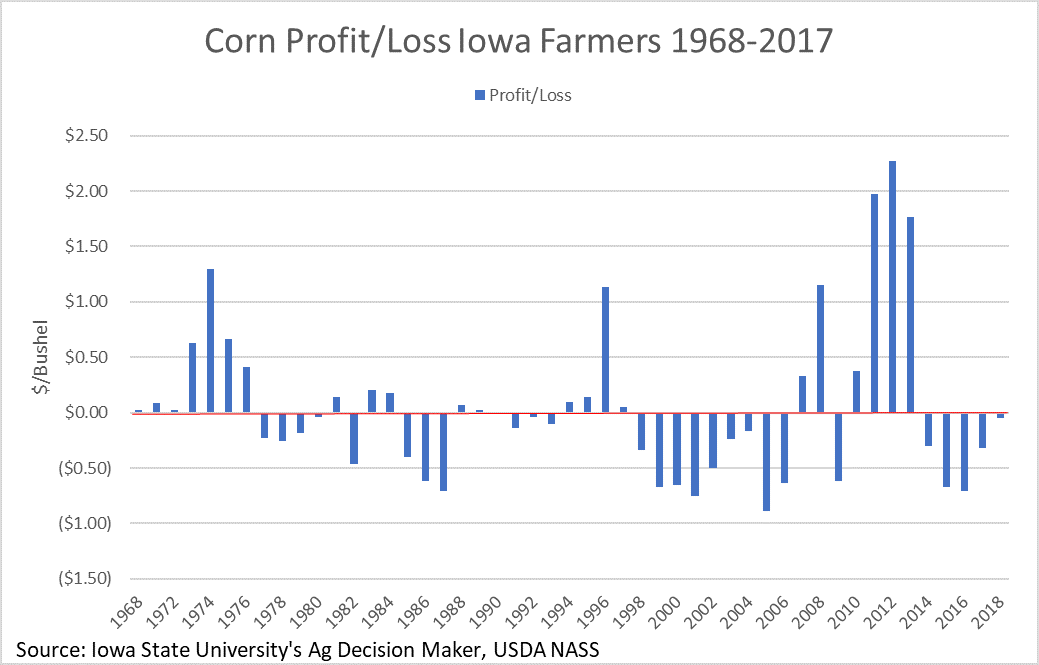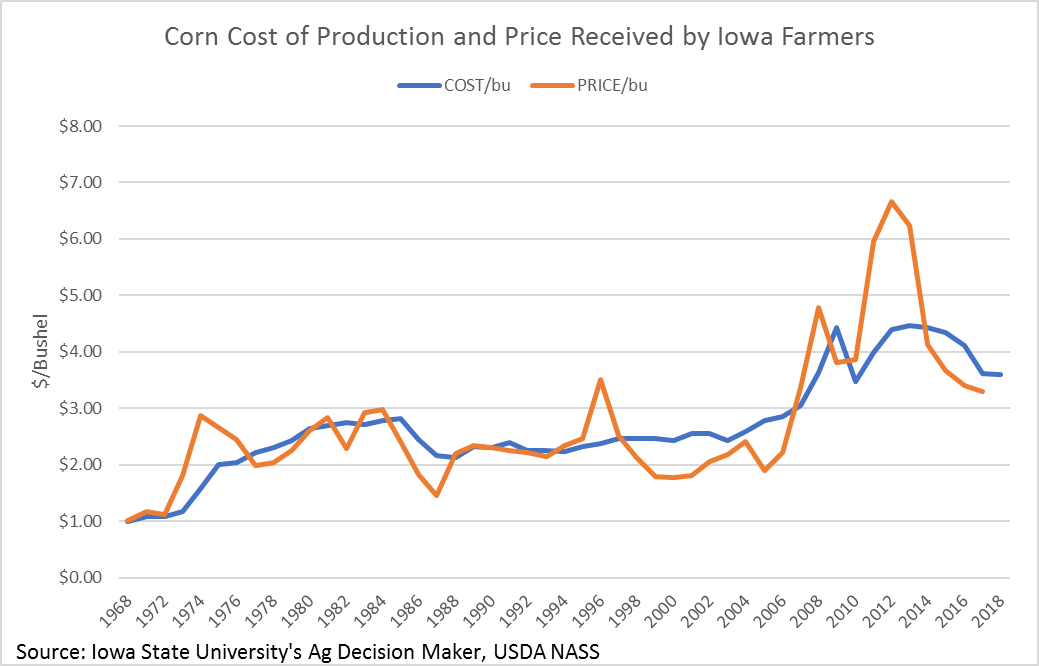Corn Profitability
Author
Published
8/8/2018
Corn has been grown across Iowa for more than 150 years, nearly 30,000 kernels are planted per acre, and corn yields can be close to 200 bushels per acre in a good year on high CSR land. Additionally, what used to take days to plant can now be done in minutes. While advancements in technology make producing corn more efficient, there are still commodity markets which must be contended with. In recent years, corn profits have been significantly more volatile than years past.

Figure 1
It is important to mention that although there are clear profits and losses, this does not sum up the complete profitability of a corn or soybean farmer. Government programs called Agriculture Risk Coverage (ARC) and Price Loss Coverage (PLC) can help farmers protect against the risks of weather and prices. Government programs to protect farmers from agriculture risk have been around for many years, Although ARC and PLC have only been around since 2014. Agricultural price and income policy has been in place in different forms since World War I.
The average corn profit since 1968 has been $0.05/bu, however in the last 5 years the cost to price margin was, on average, -$0.05/bu, if this average is extended to 10 years the average corn profit per bushel is $0.49/bu. The increase between the five and ten-year averages is because the very high prices of the drought years (2011-2013) are added in.
Corn costs were much smoother than prices. Additionally, there seems to be reactionary trend for costs to prices the year before. This is likely a phenomenon caused by price expectations. This can be viewed in Figure 2.

Figure 2
Corn costs were much smoother than prices. Additionally, there seems to be reactionary trend for costs to prices the year before. This is likely a phenomenon caused by price expectations. This can be viewed in Figure 2.
Want more news on this topic? Farm Bureau members may subscribe for a free email news service, featuring the farm and rural topics that interest them most!